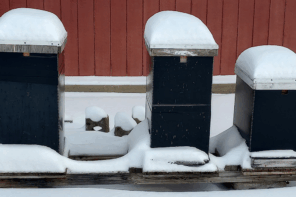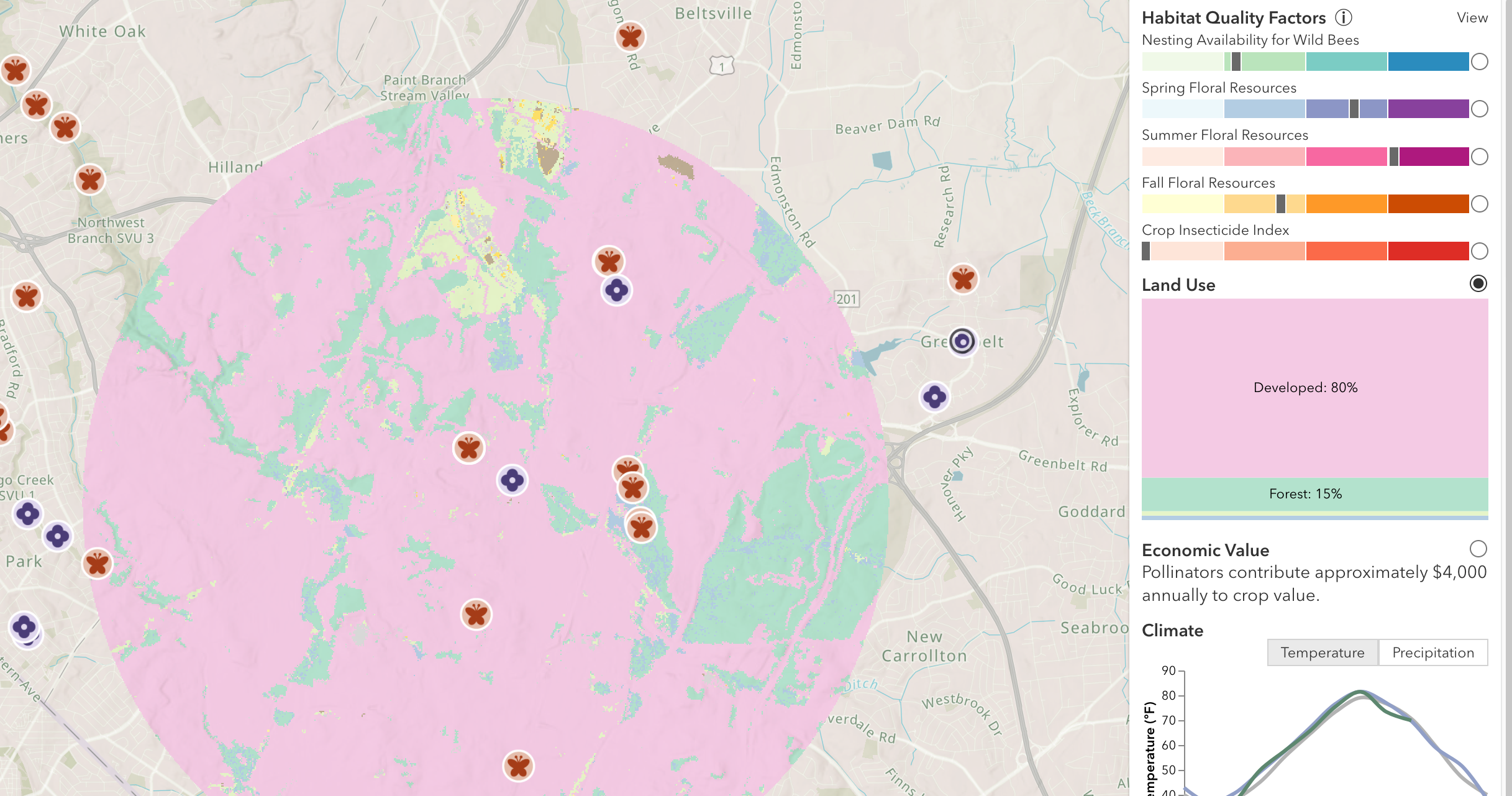Weather and Honey Bees
Earl Hoffman
- Please let us consider thoughts on how wind, rain, floods, ice/snow, and drought affect honey bee colonies.
- Think of why feral colonies choose trees in the woods to find shelter.
- Honey bees can not fly fast; wings beating 230 times per second provide on average a speed of only 15 mph with bursts of 20 mph. If the bees are not carrying pollen, nectar or propolis they could fly as fast as 40 mph.
- Let me suggest that wind and wind chill are both environmental dangers to honey bees and their colony.
- It is advisable to always place colonies behind a wind break and not at the crest of a hill. You can use the side of a hill if the land provides a wind buffer.
- I prefer using the south wall of buildings to cut the cold north wind and to provide access to solar gain on those rare sunny Winter days.
- At our farm, we place our hives on the east side of a deep woods that cuts the wind to almost zero at ground level; its a nice wind break.
- Rain can loosen the soil and cause hives to tilt, or worse, to fall over.
- Place the hives at a slight tilt forward to keep rain water from collecting at the bottom board.
- Priority one, two and three is to keep the hive cover from blowing off the hive.
- Many use the abundant large rocks in the apiary to place weight on the hive.
- We use two small cement blocks that can be placed to mark the hive status.
- Others have found it necessary to use ropes or straps to secure the hive covers.
- If the wind blows over a hive, it will soon perish if the hive cover is lost.
- But if the hive is laying on the ground with the cover on, most times it will live.
- Excessive rain is not of concern, unless this will cause flooding of the apiary.
- Placing hives along river banks or flood prone land is ill advised.
- Gullies and valleys harbor both cold damp air and rapid flooding.
- The axiom that I suggest you ponder is “wet bees die.” Keep the girls dry!
- Ice and snow can both block the hive entrance at the bottom board, that is why you must provide an upper entrance for your honey bees.
- Deep snow can provide a nice wind break from blizzard conditions if it is deep.
- Winter and Spring cleansing flights are critical for the health of the hive.
- Drought is a huge challenge for the honey bees; house bees will reject nectar from the foragers if the hive needs water. Bees need water to live.
- I suggest you monitor your hives during inclement weather and take action as needed.
- Provide afternoon shade in high heat, drought conditions.
- Have hive(s) painted in reflective white paint which can reduce heat/solar gain.
- Provide water in entrance feeders if natural sources are not available (not your neighbors bird bath).










